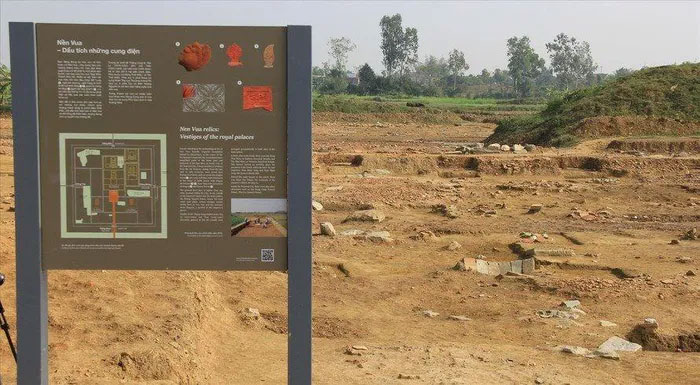Accordingly, after two years of excavation (2020 – 2021), archaeologists have conducted six excavation pits covering a total area of 25,000m2. This is the largest excavation in the history of Vietnamese archaeology in terms of total area excavated at one time.
Through this excavation, four clusters of relics dating back to the Tran-Ho period, two architectural clusters from the Early Le period, and one architectural cluster from the Later Le period were discovered. The architectural remains from the Tran-Ho period were found in the excavation pits located in the central area (the King’s base), the Southeast, and the Southwest.
Specifically, in the central architectural cluster of the King’s base, ten structures were discovered, stretching 200m from south to north and 80m wide (total area approximately 16,000m2), including structures such as the foundation of the gate, surrounding corridors, and pathways, creating a space considered to be the main hall area of the Ho Dynasty. These main structures were constructed in the shapes of the characters “Vương” (King), “Nhị” (Two), and “Công” (Merit).

Excavation site and artifacts at the Ho Dynasty Citadel
In the eastern area of the King’s base, two architectural clusters appeared with evenly distributed reinforced column foundations over a vast area. In the western area of the King’s base, traces of multi-room architecture were found, identifying one multi-room structure with multiple beams, each having four columns.
During the urban excavation process, scientists also discovered many architectural remains from the Early Le and Later Le periods characterized by the use of large bricks, yin-yang tiles, and column foundations built with broken tiles (from the Early Le period); two architectural remains from the Later Le period were also discovered, characterized by the use of large bricks, yin-yang tiles, with average column foundation dimensions of 1.3m x 1.4m made from broken tiles.
According to Associate Professor, Dr. Tong Trung Tin – President of the Vietnam Archaeological Association, this large-scale excavation has yielded many positive results, helping to identify unique architectural remains, the largest in the history of traditional Vietnamese architectural research in the central area of the Ho Dynasty Citadel. “This is the oldest main hall relic discovered in the history of Vietnam’s capital up to today.
Mr. Nguyen Ba Linh – Director of the Ho Dynasty Citadel Heritage Conservation Center stated that based on the initial assessment of the potential of the heritage as well as the values of the discovered relics, it is necessary to plan comprehensive and in-depth research, and develop conservation and protection plans for the integrity of the heritage site in accordance with international conventions for a world heritage site of the scale of the Ho Dynasty Citadel.


















































